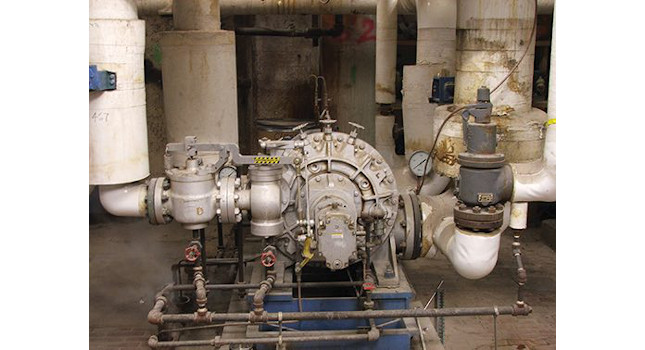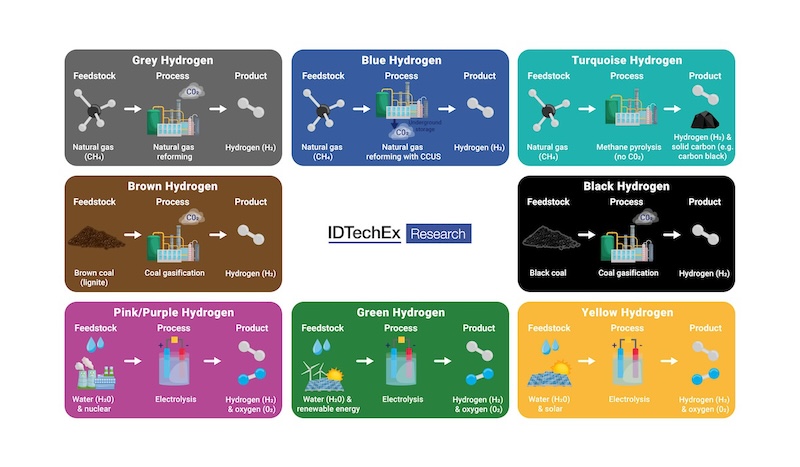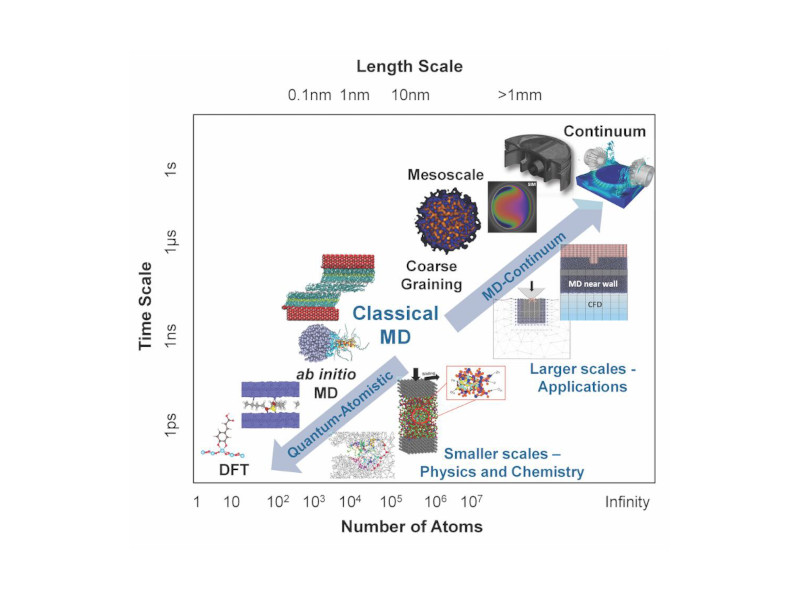There are many chances for companies to improve overall efficiency with their steam system with a thorough analysis; learn how

Traditional businesspeople see steam as a source of heat and power for producing final products. Today’s cost-conscious industrial professionals are also seeing it as a source of potential to increase corporation profits. Achieving a high steam system thermal cycle efficiency will increase profits by an average of 15% to 21%.
A high percentage of the steam systems in use in industrial applications today are operating far below world-class standards in steam system thermal cycle efficiency. Industry professionals are finding that even small improvements made to their often-ignored steam systems can yield big benefits in operating reliability, efficiency, and can contribute to an organization’s bottom line.
In today’s competitive market, we cannot ignore the achievable savings in improving a neglected steam system and reducing wasted steam energy. An average industrial plant will have a fuel budget of $3,500,000. Improving the steam thermal cycle efficiency by only 10% will net a savings of $350,000 for the plant’s bottom line.
Using less fuel in the boiler operation to produce steam will lower the emissions from the boiler operation, which improves the plant’s environmental impression.
Steam system thermal cycle efficiency
What is steam thermal cycle efficiency, and what affects that efficiency? These are questions all steam system managers must be able to answer.
The average steam system thermal cycle efficiency is 56.3%, which means 43.7% of the energy consumed in boilers is wasted or lost. It is impossible to use all the energy input into the boilers. So while the operation will have a few acceptable losses, a high percentage of losses can be prevented or eliminated. Some plants may be more efficient, and some plants may be less efficient. Until the steam system is benchmarked, plant management will not know how much energy is being lost in the steam system.
Calculate the thermal cycle efficiency by subtracting the Btus recovered and returned to the boiler plant from the total fuel energy or Btus input into the boiler to generate the steam.
-
When benchmarking the thermal cycle, the quantity of the sensible energy in the condensate returned to the boiler is considered the recovered energy.
-
The deaerator uses steam from the main steam line to maintain pressure and temperature on the deaerator. Therefore, it cannot be the benchmark for recovered condensate.
Components that can affect thermal cycle efficiency
The steam system components that can affect the steam system thermal cycle efficiency need to be reviewed. No item can be overlooked. Each item, if not managed properly, can contribute significant losses. Consider the following categories:
Steam generation
-
Boilers
-
Steam turbines.
Steam distribution
-
Piping
-
Steam leaks
-
Insulation
-
Valves
-
Expansion devices
-
Steam trap stations.
End users
-
Shell and tube heat exchangers
-
Plate and frame.
Condensate systems
-
Condensate lines
-
Flash steam losses
-
Pumps
-
Condensate leaks
-
Condensate losses
-
Tanks.
Steam generation losses
The first areas that need to be reviewed are involved in generating steam. These can create significant energy losses before the steam is even distributed into the steam system.
Boiler flue gas
The boiler has, on average, a 16.4% energy loss due to the flue gas volume and the elevated temperature of the gases from the combustion process. The boiler can have several devices to lower the flue gas losses.
Boiler outer shell or casing losses
The outer shell, or the boiler’s casing, will contribute a low-loss percentage (0.5%), which is acceptable as long as the boiler casing does not have hot spots or above-normal temperatures. The plant should perform an infrared camera scan of the boiler’s casing at least once a year. The data is benchmarked to detect fatigue of the boiler’s internal insulation.
Boiler continuous blowdown
The continuous blowdown is continually skimming the boiler water impurities slightly below the water level and discharging boiler water to a blowdown tank. The estimated energy loss from the continuous blowdown is 1.5%, which will depend on several factors discussed in other best practices.
Boiler bottom blowdown
The bottom blowdown occurs periodically from the lowest water containment area in the boiler. The periodic bottom blowdown removes sludge and discharges the water and materials to a blowdown tank. The estimated energy loss from the bottom blowdown is 0.2%, which depends on several factors discussed in other best practices.
Steam turbine
The loss of mechanical work from reducing steam pressures with a control valve and not using a steam turbine for the pressure reduction is not added into the thermal cycle losses. A rule of thumb to use is 75 lbs. of steam per hour equals 1 horsepower of work from a steam turbine. Steam turbines can be used in many different applications besides electrical generation.
Total steam generation losses
The steam has left the steam generation area, and the summary of the estimated losses include:
-
Boiler flue gases: 16.4%
-
Boiler outer surface losses: 0.5%
-
Continuous blowdown: 1.5%
-
Bottom blowdown: 0.2%
-
Total: 18.6 %.
The energy loss is 18.6%, and the steam vapor has not performed any usable work.
Steam distribution
To enable the steam to release the contained energy to the process, the next step is distributing the steam to the end users.
Insulation
Insulation is the most overlooked item that can provide energy savings. According to the U.S. Department of Energy Best Practices Steam program, mechanical insulation should be used on any surface hotter than 120 F (49 C). Therefore, all steam and condensate components must be insulated, and the insulation must be protected to ensure long operational life. The estimated energy loss is 6.4%.
Steam leaks
Steam and condensate leaks cost industrial plants millions of dollars in lost energy while increasing emissions, creating safety hazards and lowering the reliability of plant operations. Steam leaks result in the loss of latent and sensible energy. While plant personnel would be well advised to pay attention to all utility losses, greater attention should be paid to the costs and problems associated with those losses related to steam. An estimated energy loss from steam and condensate leakage is 7.5%.
Summary of the energy losses to this point:
-
Insulation: 6.4%
-
Steam leaks: 7.5%
-
Total: 13.9%
-
-
Steam generation: 18.6%
-
Steam distribution: 13.9%
-
Total energy loss: 32.5%.
-
The total energy loss is now at 32.5%, and the steam vapor has not performed any usable work.
End users
Finally, the steam has reached the intended objective, which is providing the latent energy to the process. The losses from not insulating the heat exchangers, tracer lines, jacket tank heaters, etc. have already been included in the insulation estimate. The steam leaks from flanges, threaded connections, valves, etc., have already been added into the previous estimate.
Steam trap stations
Failure rates of 18% or more with the steam trap station population have been deemed a normal steam trap station operational performance level, which is unacceptable. The failure rate of any steam trap station population must be below 3%. The energy loss from failed steam trap stations from steam blowing through and the energy being lost to the atmosphere is estimated at 3.6%.
Summary of the end user loss points
-
Insulation: 4.4%, already added in the totals
-
Steam leaks: 6.5%, already added in the totals
-
Steam trap station failures: 3.6%
-
Total: 3.6% (insulation and steam leaks have already been added in the previous estimates).
Condensate systems
The steam has released the latent energy to the process, which means the sensible energy is in the condensate.
Condensate losses
Condensate contains 16% of the energy in the steam vapor (sensible energy). Therefore, failing to recover the condensate is a significant loss. The estimated energy loss from unrecovered condensate is 3.8%.
Steam lost to the atmosphere
The flash and live steam lost to the atmosphere represents the last of the energy losses in the thermal cycle. Venting steam to the atmosphere reduces the thermal cycle efficiency and contributes to an increase in emissions. The benchmark in today’s industrial plants is to have no steam venting to the atmosphere. The steam components that allow steam to be lost to the atmosphere include:
-
Vented condensate tanks
-
Vented flash tanks
-
Automatic steam vents
-
Deaerator vents.
-
Average estimated loss = 7.4%.
Summary of the condensate system losses
-
Condensate: 3.8%
-
Steam lost to the atmosphere: 7.4%
-
Insulation: 4.4%, already added in our totals
-
Total: 11.2% (insulation not added in the total).
Steam thermal cycle summary
The remaining the condensate has been delivered to the deaerator operation, completing the thermal cycle. The deaerator system will use live steam to add the sensible energy to the condensate and make-up water to begin the process of elevating the temperature of the feedwater to the saturated temperature of the operating steam pressure.
-
Boiler flue gases: 16.4%
-
Boiler outer surface: 0.5%
-
Continuous blowdown (boiler): 1.5%
-
Bottom blowdown (boiler): 0.2%
-
Insulation (team and condensate): 6.4%
-
Steam leaks: 7.5%
-
Steam trap station failures: 3.6%
-
Condensate losses: 3.8%
-
Steam lost to atmosphere: 7.4%
-
Total losses: 43.7%.
The steam system cycle is complete. The average energy losses are 43.7%, and only 56.3% of the steam energy was used successfully. Today, an energy cost of 43.7% is unacceptable, and optimization will improve the company’s bottom line. Another tremendous plus to a steam optimization program is the reduction of emissions.
Kelly Paffel is technical manager at Inveno Engineering in Tampa, Fla.
– This article appeared in the Gas Technology supplement.
More info
Energy Solutions Center
Inveno Engineering
https://invenoinc.com/



